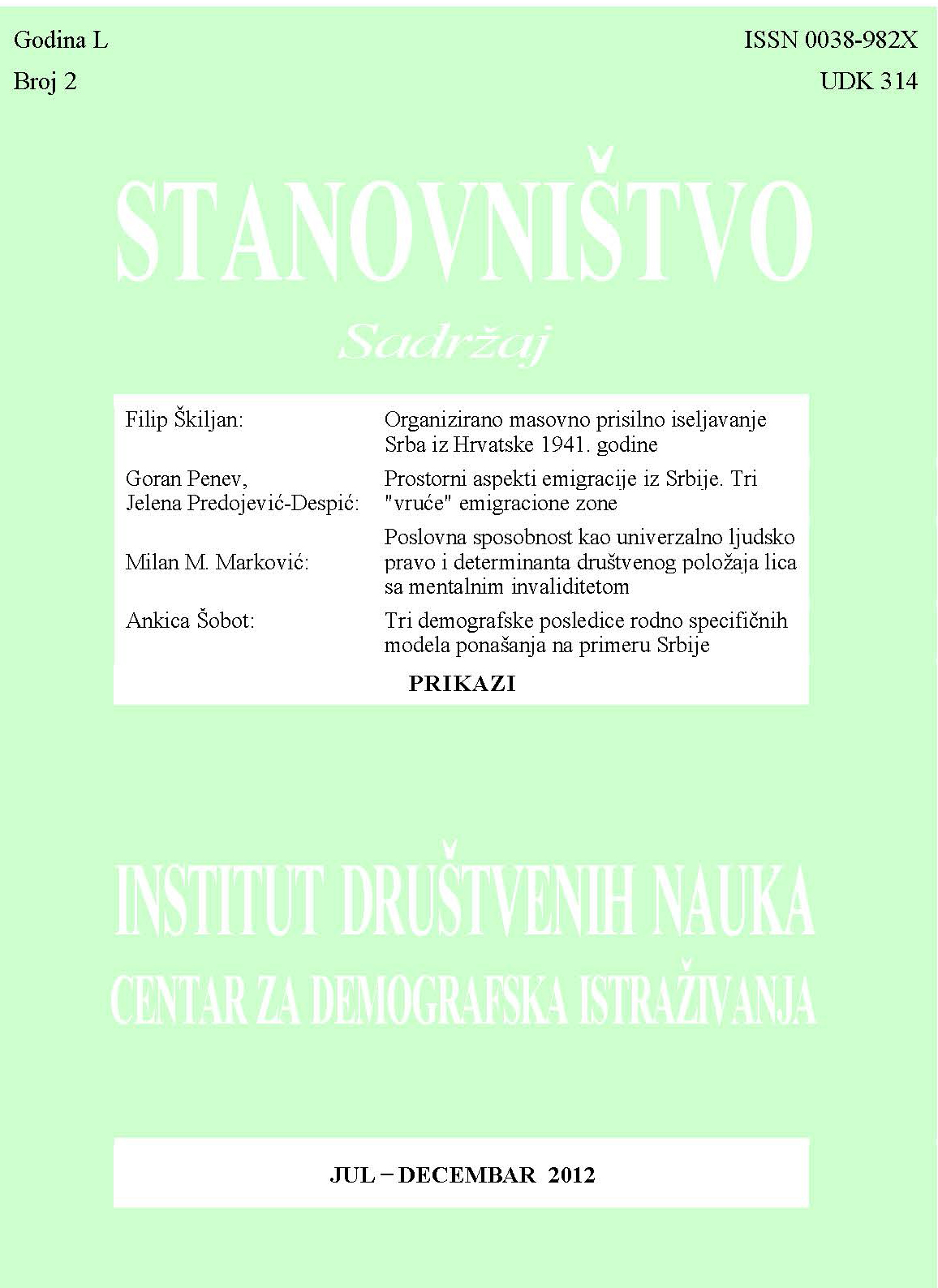Prostorni aspekti emigracije iz srbije. Tri "vruće" emigracione zone
Spatial Aspects of Emigration Out of Serbia. Three 'Hot' Emigration Zones
Author(s): Goran D. Penev, Jelena R. Predojević DespićSubject(s): Sociology, Demography and human biology, Migration Studies
Published by: Институт друштвених наука
Keywords: international migration; country of origin; spatial analysis; Serbia
Summary/Abstract: The paper analyzed the dynamics of the emigration of the population of Serbia in the period of 1971 to 2011, primarily based on the results of the five latest population censuses. Special attention was paid to the spatial aspect of emigration, at the level of the lowest administrative units (municipalities). It was shown that the shares of persons working or living aboard were very uneven by municipality, and that the differences became increasingly pronounced over time. Very uneven shares of persons working or living abroad in the total population of Serbia by municipality, as well as the trend of increasing differences, also influenced the very heterogeneous spatial distribution of that emigration contingent. Based on the concentration of population abroad, as well as the percentage of persons abroad in the total population (in the country and abroad), the paper defines three "hot" zones of substantial emigration. Zone 1 (in the central-eastern Serbia) is traditionally a high emigration area, which, for all three observed points in time (1991, 2002 and 2011), had at least twice as high a share of population abroad as the average for Serbia. Zone 2 (in the south of Serbia) consists of the municipalities of Bujanovac and Preševo, where the majority of the population consists of ethnic Albanians. The shares of population abroad was already in 1981 and 1991 noticeably higher than the average for Serbia, but also significantly lower than in Zone 1. Between 1991 and 2002, the number of emigrants from that zone was more than tripled, and their share in the total population of emigration Zone 2 increased from 6.1% to 23.1% in 2011. Zone 3 (five municipalities from the Serbian part of the region of Sandžak) did not join the group of notably emigration areas until the 1990s. Between 1991 and 2002, the number of persons abroad increased by up to six times, and their share in the total population of those five Sandžak municipalities increased from 2.3% to 12.6%. In this paper, all three zones were analyzed, as well as the structures of emigrants based on the length of their stay abroad, the country of destination and ethnic composition. For all three zones, it is notable that the countries of destination do not differ significantly in terms of length of stay abroad, based on which the authors conclude that new emigrants primarily go to places that already have formed migrant networks. In all three zones, the share of ethnic Serbs in the total population of the country is greater than their share in the total number of emigrants. Additionally, census data indicated that members of the local major ethnic group in Zones 2 and 3 participated significantly more often in international migration than "local" ethnic Serbs. In connection to this, the authors stress the importance of the political aspect of this issue, especially in the period of crises and wars during the 1990s.
Journal: Stanovništvo
- Issue Year: 50/2012
- Issue No: 2
- Page Range: 35-64
- Page Count: 29
- Language: Serbian

